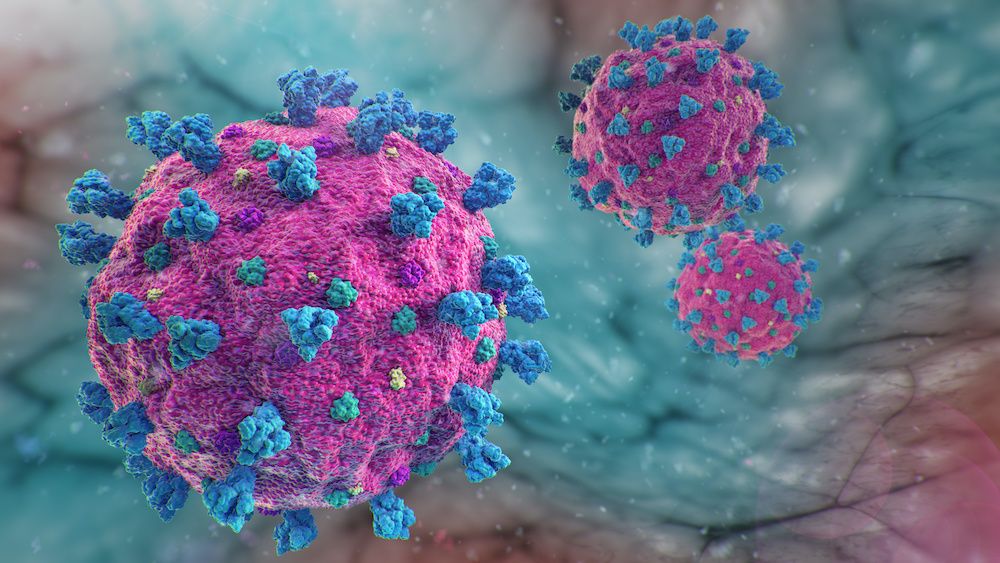Smell Disturbances in the Era of COVID-19
Some patients affected by COVID-19 may be concerned about hyposmia (reduced ability to smell) or anosmia (loss of smell) that they experience after contracting the virus.

Some patients affected by the coronavirus disease 2019 (COVID-19) may be concerned about hyposmia (reduced ability to smell) or anosmia (loss of smell) that they experience after contracting the virus. Although the exact prevalence of olfactory disturbances in patients with COVID-19 is not known, various studies reported the rates to be as low as 5% and as high as 98%.1 In a telephone survey of Italian patients diagnosed with COVID-19, the investigators found that olfactory disturbances were reported early on in the course of the disease and that severe disturbances were more likely to be reported by female patients.2 Likewise, the investigators found that patients who reported severe olfactory disturbances were significantly younger than patients with no or mild olfactory disturbances.
Reports of olfactory disturbances are not unique to the COVID-19 pandemic. Patients with other viral upper respiratory infections (URIs) may develop olfactory loss as a result of nasal inflammation, mucosal edema, and obstruction of airflow into the olfactory cleft.3 Episodes of olfactory loss secondary to URIs are usually self-limiting and generally do not persist beyond the resolution of URI symptoms. At times, however, the loss of smell may persist for an extended period of time (months to years) and is thought to result from a more direct injury to the olfactory system that is induced by the viral infection. With respect to patients with COVID-19, unpublished data and anecdotal reports suggest that the resolution of olfactory symptoms usually occurs within approximately 2 weeks. At the present time, it is unknown what proportion of patients with COVID-19 develop persistent olfactory loss.4 When these symptoms do persist for an extended period of time, they may be troubling and concerning to the affected individuals. In such cases, patients or their caregivers may turn to health care professionals for advice and guidance on management strategies.
Numerous drugs and supplements have been studied for the management of viral-associated olfactory loss.3 Oral and intranasal steroids have been used for post-infectious olfactory loss, but they are not recommended because of the risks associated with their use.4 Intranasal sodium citrate, intranasal vitamin A, or systemic omega-3 have shown some efficacy but definitive evidence to support their use in patients with COVID-19 is lacking.4 In the absence of proven pharmacotherapy, olfactory training (OT) has been recommended as a primary treatment strategy for viral-associated olfactory loss.3 Through OT, the brain is re-trained to correctly interpret the neurologic signals received from various odorants. The training consists of smelling 4 different odors twice per day, every day. Specifically, patients are advised to smell 1 odor at a time for 15 seconds while trying to recall what it previously smelled like. Patients are then advised to rest for 10 seconds and repeat the process until all 4 odors have been sampled. While specific scents have been suggested for OT (eg, rose, eucalyptus, lemon, clove), patients can select specific scents that they wish to incorporate into their training. Many individuals purchase essential oils containing the odors that are selected for inclusion in their training. The training process continues with the same 4 odors for a 3 month period, after which training begins with a new set of odors. Olfactory training has been shown to be effective in multiple clinical studies but results vary.3 The improvement in smell is often slow and occurs over many months or even years.
In summary, olfactory loss is frequently reported by patients with COVID-19. Although in some patients, the condition is self-limiting, in others it may persist for an extended period of time. In the absence of proven pharmacotherapy, OT is recommended as a primary management strategy.
Dr Nathan is the director at the International Drug Information Center and associate professor at Arnold & Marie Schwartz College of Pharmacy and Health Sciences, Long Island University.
Dr Grossman is a drug information specialist at the International Drug Information Center and adjunct assistant professor at Arnold & Marie Schwartz College of Pharmacy and Health Sciences, Long Island University.
References
1. Chung TWH, Sridhar S, Zhang AJ, et al. Olfactory dysfunction in coronavirus disease 2019 patients: observational cohort study and systematic review. Open Forum Infect Dis. 2020;7(6):doi:10.1093/ofid/ofaa199.
2. Mercante G, Ferreli F, De Virgilio A, et al. Prevalence of taste and smell dysfunction in coronavirus disease 2019 [published online ahead of print, 2020 Jun 18]. JAMA Otolaryngol Head Neck Surg. 2020;e201155.doi:10.1001/jamaoto.2020.1155.
3. Soler ZM, Patel ZM, Turner JH, et al. A primer on viral‐associated olfactory loss in the era of COVID‐19. Int Forum AllergyRhinol. 2020;10.1002/alr.22578.doi:10.1002/alr.22578.
4. Whitcroft KL, Hummel T. Olfactory dysfunction in COVID-19: diagnosis and management. JAMA. 2020;323(24):2512–2514.doi:10.1001/jama.2020.8391.